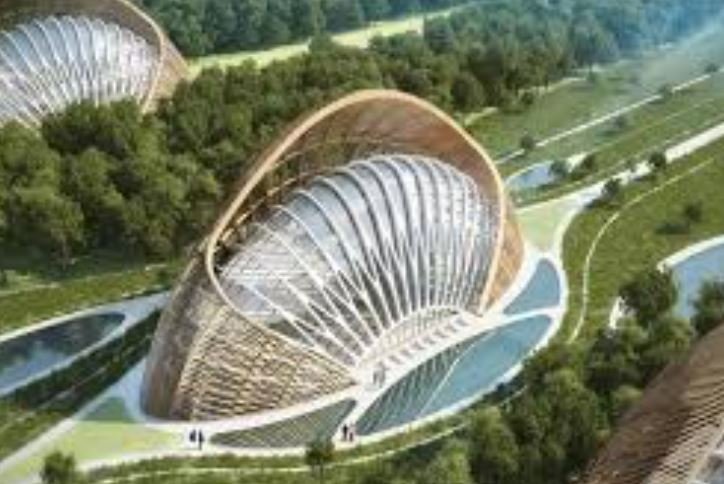Biomimicry in Architecture
- By -Peter
- Posted on
- Posted in Modern Architecture
Biomimicry in architecture revolutionizes design by emulating nature’s time-tested patterns and strategies. This innovative approach addresses sustainability, efficiency, and aesthetics, drawing inspiration from the natural world to solve human challenges. As urbanization accelerates, architects increasingly look to nature for sustainable and resilient solutions.

1. Inspiration from Natural Forms
Biomimicry in architecture starts with inspiration from natural forms. Architects study organisms and ecosystems to create buildings that harmonize with their environment. For example, the Eastgate Centre in Zimbabwe mimics termite mounds’ natural cooling system. This design significantly reduces energy consumption by utilizing passive cooling techniques, demonstrating how nature-inspired solutions can lead to sustainable, efficient buildings.
2. Structural Efficiency
Nature’s designs often exhibit remarkable structural efficiency, which architects replicate to enhance building resilience and resource use. The Eden Project in the UK features geodesic domes inspired by natural geometry. These structures provide maximum strength with minimal material, reducing construction costs and environmental impact. By emulating natural structures, architects achieve efficient, durable buildings that stand the test of time.
3. Sustainable Materials and Processes
Biomimicry encourages the use of sustainable materials and processes. Architects draw inspiration from natural materials, like spider silk, to develop strong, lightweight building materials. Innovations such as self-healing concrete, inspired by biological processes, enhance building longevity and reduce maintenance costs. These sustainable materials and processes contribute to more eco-friendly construction practices.
4. Adaptive Designs
Adaptive designs in biomimicry allow buildings to respond to environmental changes. The Al Bahar Towers in Abu Dhabi feature a responsive facade inspired by the design of a palm leaf. The dynamic shading system adjusts to sunlight, reducing energy consumption for cooling. Such adaptive designs create buildings that interact with their surroundings, optimizing energy efficiency and comfort.
5. Energy Efficiency and Climate Resilience
Biomimicry improves energy efficiency and climate resilience in architectural design. The Gherkin in London, inspired by marine sponge structures, incorporates natural ventilation and energy-saving systems. These features reduce the building’s carbon footprint and enhance its ability to withstand climate variations. By learning from nature, architects design buildings that conserve energy and resist environmental stresses.
6. Case Studies of Biomimetic Architecture
Case studies highlight the successful application of biomimicry in architecture. The Lotus Temple in India, inspired by the lotus flower, uses natural ventilation and cooling methods, reducing reliance on mechanical systems. Similarly, the Beijing National Stadium, or Bird’s Nest, mimics bird nest structures, combining aesthetics with structural integrity. These examples showcase how biomimicry can lead to innovative, functional, and beautiful architectural designs.
Biomimicry’s Role in Urban Planning
Biomimicry extends beyond individual buildings to influence urban planning. By studying ecosystems, planners develop cities that function like natural systems, optimizing resource use and waste management. Green roofs, inspired by forest canopies, enhance urban biodiversity and reduce heat islands. Integrating biomimicry in urban planning fosters resilient, sustainable cities that coexist with nature.
Conclusion
Biomimicry in architecture offers a transformative approach to building design, emphasizing sustainability, efficiency, and harmony with nature. By drawing inspiration from natural forms, processes, and systems, architects create innovative solutions to modern challenges. As urbanization continues, biomimicry will play a crucial role in shaping resilient, eco-friendly buildings and cities. Embracing nature’s wisdom, architects can design a sustainable future that benefits both people and the planet.



